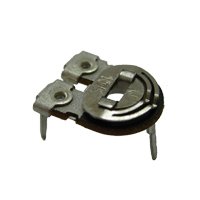Sorry if this has been discussed before, if so please point me to that thread.... What to clean and lubricate pots and switches with? The more I read about this the more confusing and complicated it seems!
Last time I did this I used Servisol Aero Klene 50 followed by a shot of Deoxit D series on all the pots and switches on my Ferguson 3T18 boombox, and it seemed to work very well, it sorted out a very crackly selector switch and not a hint of crackle on any other controls BUT the boombox died with a sudden and unexpected loud buzz a few weeks later. I just read online
that deoxit 5 contains a conductive lubricant that should not go onto any other components or circuit boards. As I was quite generous with the treatments and did not put a cloth underneath to soak up the excess could this have contributed to my Ferguson's sudden demise?
Also pots and switches are made of different materials right? Pots carbon? Switches metal alloy or gold?
So which cleaner and lubricants to use on what? And how do you know which metals are used for connections in switches?
And if you need to use a whole armoury of cleaners and lubricants for a boombox given the high prices especially of deoxit it could end up costing a small fortune to clean up those pots and switches!
Sorry this is such an involved question but I do understand that good connections are vital for good performance.
I need to clean up the switches and pots in my newly acquired Roberts RSR 100 (AKA Hitachi TRK 8110E) and I want to get it right.
Your thoughts advice and experience's please....
Last time I did this I used Servisol Aero Klene 50 followed by a shot of Deoxit D series on all the pots and switches on my Ferguson 3T18 boombox, and it seemed to work very well, it sorted out a very crackly selector switch and not a hint of crackle on any other controls BUT the boombox died with a sudden and unexpected loud buzz a few weeks later. I just read online
that deoxit 5 contains a conductive lubricant that should not go onto any other components or circuit boards. As I was quite generous with the treatments and did not put a cloth underneath to soak up the excess could this have contributed to my Ferguson's sudden demise?
Also pots and switches are made of different materials right? Pots carbon? Switches metal alloy or gold?
So which cleaner and lubricants to use on what? And how do you know which metals are used for connections in switches?
And if you need to use a whole armoury of cleaners and lubricants for a boombox given the high prices especially of deoxit it could end up costing a small fortune to clean up those pots and switches!
Sorry this is such an involved question but I do understand that good connections are vital for good performance.
I need to clean up the switches and pots in my newly acquired Roberts RSR 100 (AKA Hitachi TRK 8110E) and I want to get it right.
Your thoughts advice and experience's please....


 as a byproduct it gets everywhere.
as a byproduct it gets everywhere.
